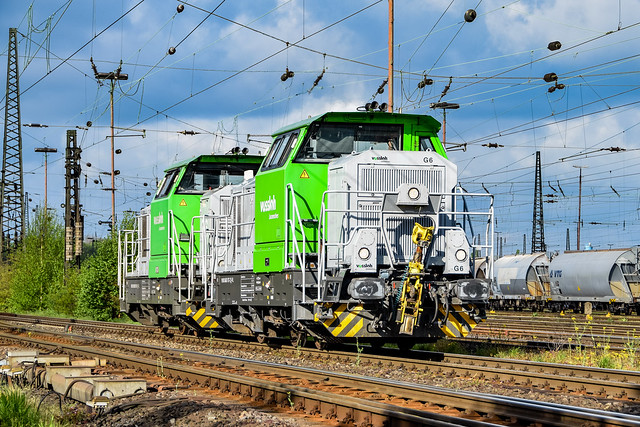
The state-owned enterprise is taking its first steps in the European market.
An interesting little story from Europe popped up in our news alerts on Tuesday morning.
It seems that Vossloh, a German rail technology company, is divesting its locomotives business so it can focus on rail infrastructure.
Normally, we here at the Alliance for American Manufacturing wouldn’t pay much attention to the business dealings of a German manufacturer like Vossloh. But what caught our eye was who ended up buying Vossloh’s locomotives unit: China Railway Rolling Stock Corporation Ltd (CRRC).
Nikkei Asian Review reports:
“CRRC, the Chinese state company that is the world’s largest train maker, is set to gain a key foothold in Europe by acquiring its first factory on the continent… Vossloh announced Monday that it would sell a locomotive factory it opened last year to CRRC Zhuzhou Locomotive, a subsidiary of Hong Kong-listed CRRC.”
If you aren't familar with CRRC, it is a massive Chinese government-owned conglomerate with deep ties to the Chinese communist party. CRRC is a key player in the government’s “Made in China 2025” initiative, in which China is aiming to dominate sectors of the global industrial economy, including rail manufacturing.
Most of the recent attention about CRRC has been centered on the Chinese government’s efforts to use the company to dominate passenger rail car manufacturing, including in the United States. Backed by government subsidies, CRRC has severely underbid (and won) taxpayer-funded contracts to build rail cars in cities like Boston, Philadelphia, and Chicago.
But allowing a Chinese state-owned enterprise to use taxpayer dollars to build U.S. passenger rail cars has raised some big red flags.
A recent Oxford Economics report found that every $1 billion given to a Chinese state-owned company to build passenger rail cars leads to the loss of 3,250 to 5,100 jobs. There are 90,000 jobs — many of them unionized — in the transportation supply chain, and all would be at risk if China succeeded in controlling the U.S. rail and bus manufacturing market.
There also are major security concerns, including fears that China will use rail cars for espionage purposes (which isn’t far-fetched, given China’s sophisticated use of facial recognition technology and the fact it wants to build rail cars for the D.C. metro). There also are fears that CRRC will move into freight rail, which would create an litany of additional security issues.
In response, Congress is now moving to ban Chinese government-owned or controlled companies like CRRC from building passenger rail and buses (you can weigh in here).
But let’s get back to that Vossloh deal, shall we?
At first glance, it seems like a weird buy for a big company like CRRC, since the factory makes diesel locomotives for short distances. Railway consultant Maria Leenen told the Nikkei Asian Review that diesel locomotives are a shrinking market segment, and electric locomotives are the future of the industry.
So why would CRRC even bother? Simple. It wants access:
“The acquisition of Vossloh's business should give CRRC's European growth ambitions a significant boost as EU regulations effectively favor domestic producers, according to Klaus Holocher, a professor for transportation management at Germany's Jade University of Applied Sciences. ‘If a Chinese company acquires a domestic player, they get all the standards and technology required to bring its trains quicker onto European railway tracks,’ he said.”
Remember that CRRC is not a typical company — it doesn’t care if it makes a profit on any individual contract or even at a single factory. CRRC operates under the direction of the Chinese government and is motivated by the “Made in China 2025” plan. It wants to dominate markets.
CRRC’s entry into Europe now makes it a rival to players like Germany’s Siemens and France’s Alstom. Those two companies saw CRRC coming and sought “to combine their train businesses to thwart CRRC from grabbing European orders.” But the European Commission blocked the merger due to “serious competition concerns.” Now CRRC is making waves.
It's worth pointing out here that CRRC was created in 2015 through the merger of Chinese companies CSR Corp Ltd and China CNR, all with the encouragement of China's government. It now controls over 90 percent of the massive Chinese train industry. So much for competition, huh?
But anyway, I digress. There is still a chance, although unlikely, that the German government will block CRRC’s purchase of the Vossloh factory. But even if that happens — again, it is unlikely — CRRC's decision to buy the Vossloh factory is a clear sign that the company is readying to make a splash in Europe.

